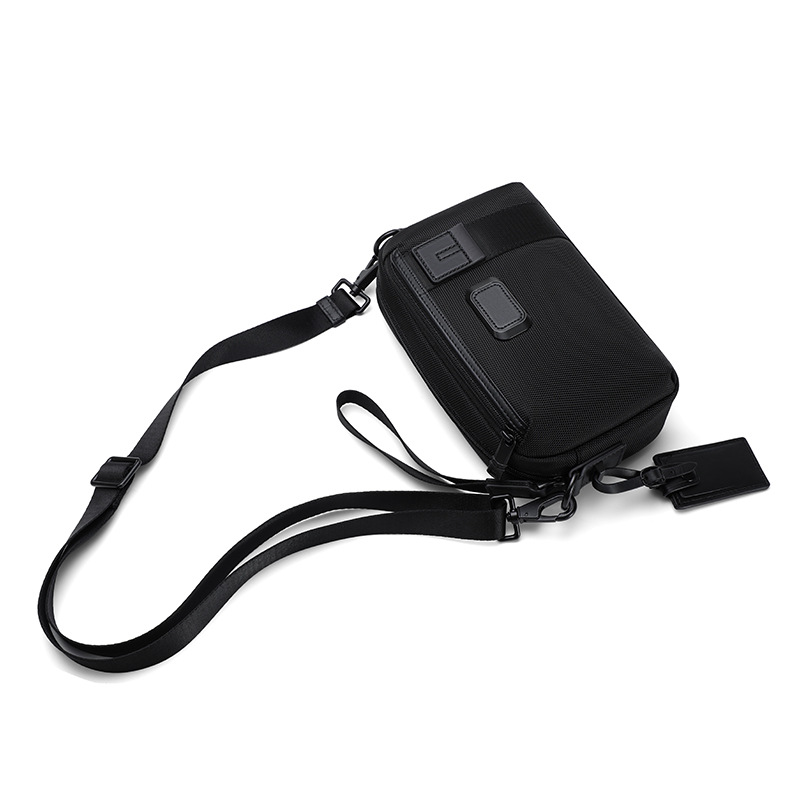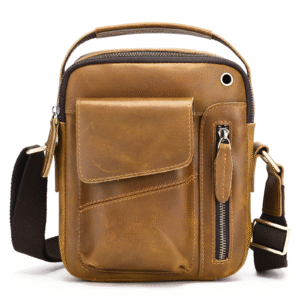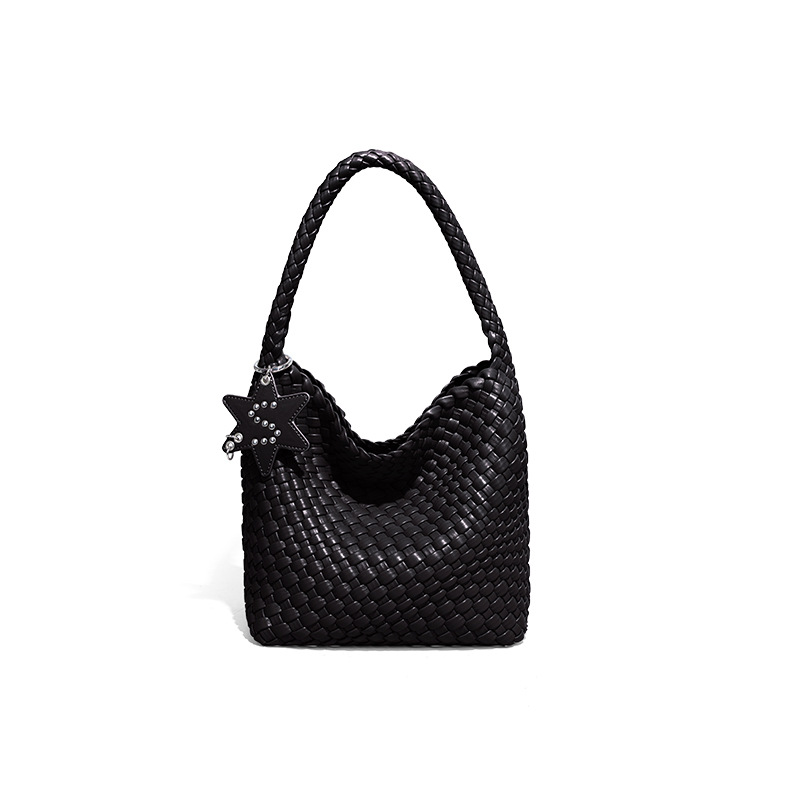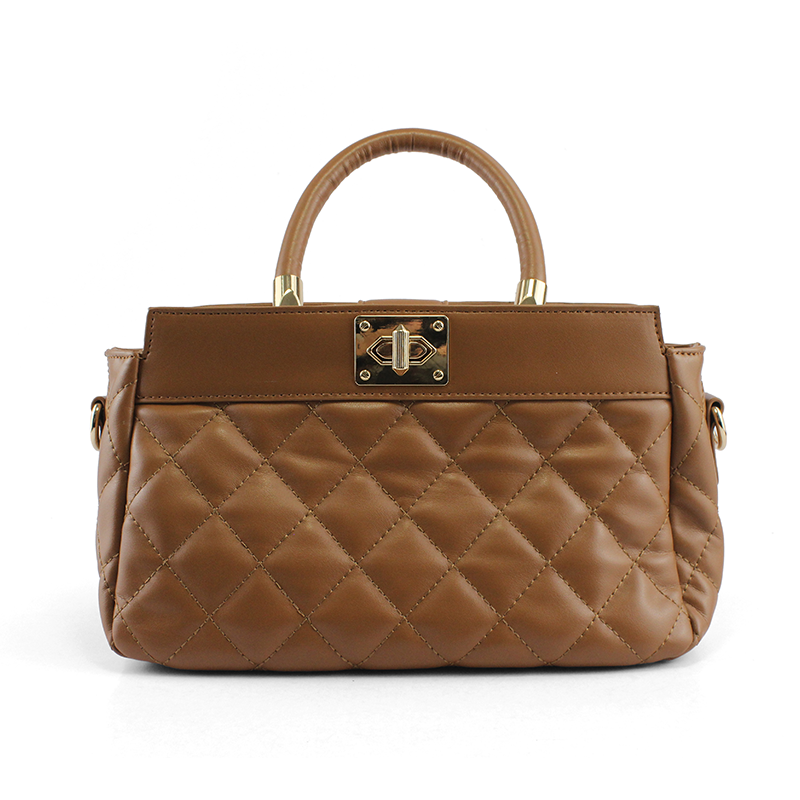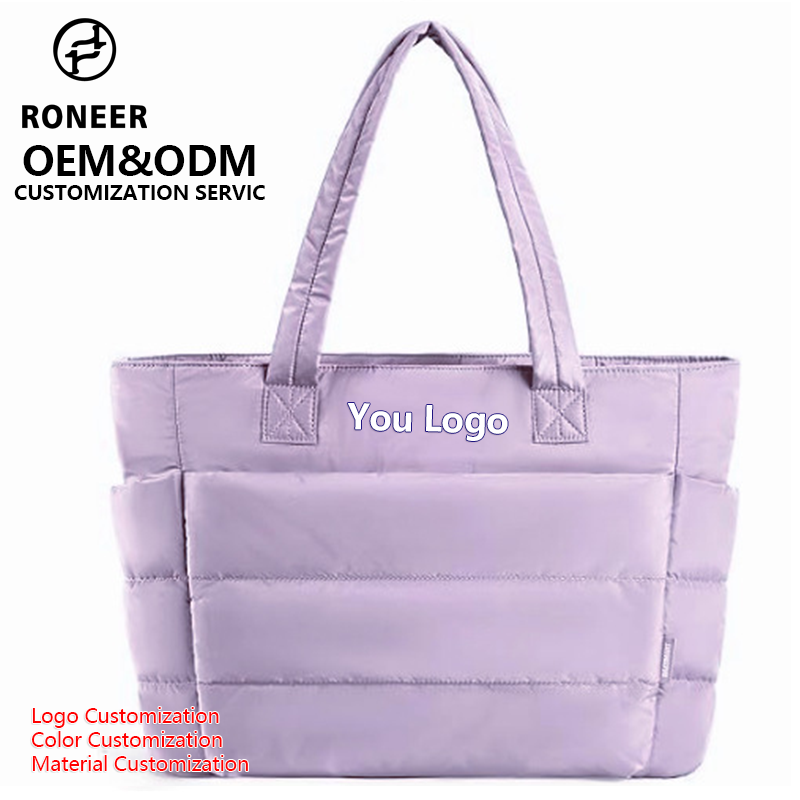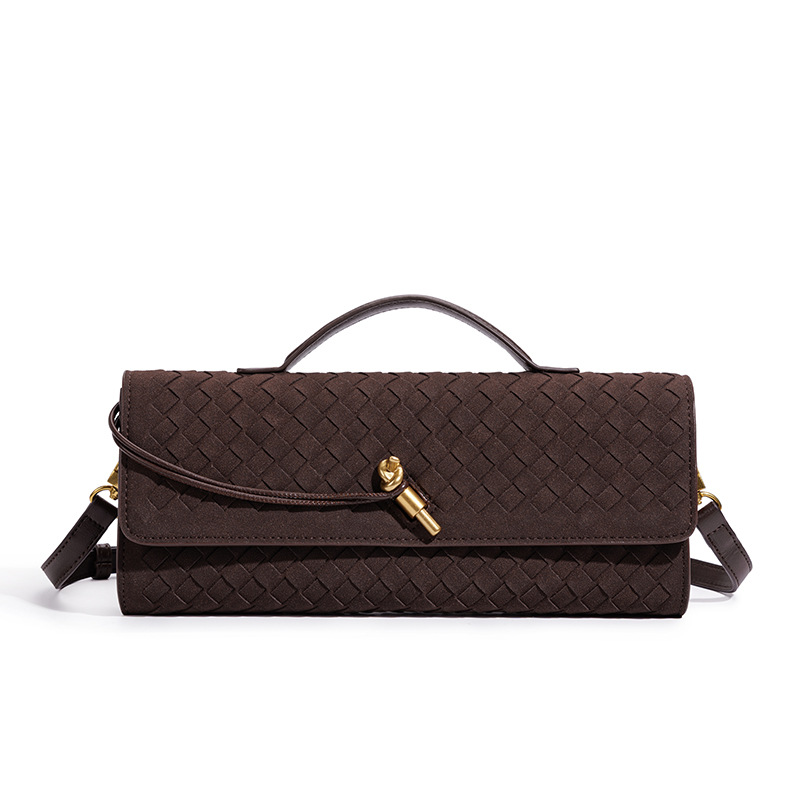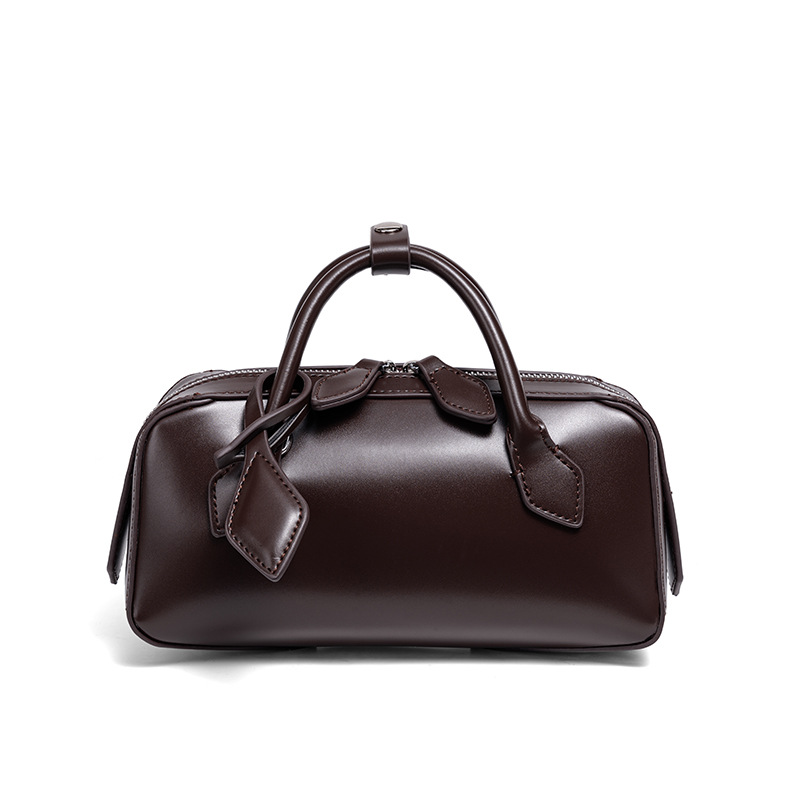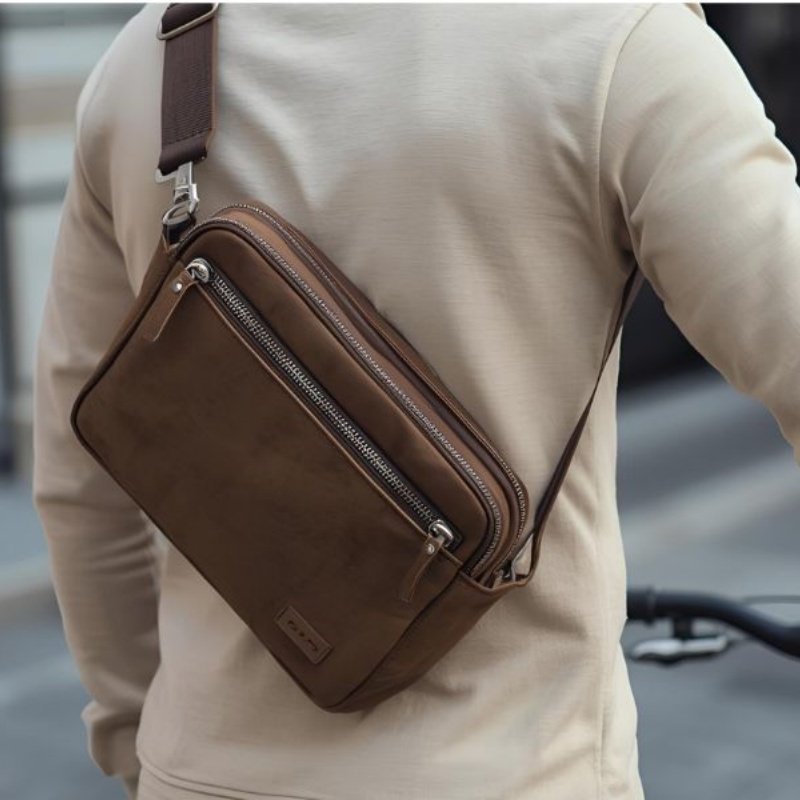In today’s fast-paced world, how can one find a bag that combines practicality, fashion sense, and comfort? Crossbody bags have become one of the popular choices for those seeking versatile accessories and seamless integration into their daily lives.
From commuting in busy cities to traveling across continents, these bags can free your hands, offer a convenient experience, and at the same time maintain a sense of fashion. In addition to its practicality, crossbody bags also reflect lifestyle choices, personal style, and the growing awareness of sustainable design. In this article, we will explore together why crossbody bags continue to attract global consumers, and discuss their history, design, practicality, market trends, and environmental significance.
What is a Crossbody Bag?
How much do you know about crossbody bags? In simple terms, a crossbody bag is actually a kind of handbag that is carried diagonally. It usually comes with an adjustable long shoulder strap, which is draped over one shoulder and spans the torso. This design is different from shoulder bags or backpacks because it can evenly distribute the weight over the body, thus freeing up hands and providing a comfortable and stable carrying experience.
The popularity of crossbody bags stems from their combination of practicality and fashion sense. Unlike traditional handbags that need to be constantly resized, crossbody bags fit closely to the body and are perfect for activities that require flexible movement, whether it’s commuting, traveling, or simple errands
The core of a crossbody bag remains functionality, but modern consumers are increasingly emphasizing aesthetics, safety, and multi-functionality. They are not only practical carriers of necessities such as wallets, mobile phones, keys, and documents, but also manifestations of personal style and lifestyle.
History and Development of Crossbody Bags
Over the centuries, crossbody bags have undergone a major transformation. Its story can be traced back to ancient times when people used it to carry letters and documents, which was simply a “portable express delivery”. In the Middle Ages, messengers and soldiers also loved to carry it. It was durable and practical.
In the 20th century, crossbody bags reached their peak – journalists, photographers, and various service personnel all vied to get them. During World War II, military designs influenced civilian use, and canvas and leather became standard equipment. By the 1970s, crossbody bags were no longer merely tools; they began to walk the catwalk, capable of both carrying items and “showing off fashion”.
Nowadays, crossbody bags come in a wide variety of styles, ranging from luxurious leather to eco-friendly materials and trendy fabrics. Its development not only reflects the changes in consumers but also the progress of material technology and the renewal of fashion trends, truly achieving the goal of transcending eras and groups of people, making it accessible to everyone.
See if you are interested in crossbody bags. Please explore our crossbody bag collection!
Design Features and Structure Analysis
The crossbody bag is powerful and carefully designed. It not only conforms to ergonomics but also takes into account both aesthetics and practicality. Here I have sorted out some of its main design elements, including:
-
Adjustable Straps: Straps can be customized for height, body type, and comfort. Adjustable straps also allow the bag to be worn across the torso, shoulder, or even as a short shoulder bag when desired.
-
Compartments and Dividers: Many crossbody bags include multiple compartments, zippered pockets, and internal dividers, enabling efficient organization of personal items such as electronics, stationery, wallets, and travel documents.
-
Security Features: Modern designs often incorporate anti-theft measures, including RFID-blocking layers to prevent digital theft, lockable zippers, and reinforced materials to resist cutting or tampering.
-
Material Selection: Designers choose materials for durability, weight reduction, and comfort. Options range from premium leather and durable canvas to eco-friendly alternatives like recycled PET fabrics and plant-based leathers.
-
Structural Ergonomics: Crossbody bags are designed to sit close to the body’s center of gravity, reducing shoulder strain compared to traditional shoulder bags and allowing easier mobility than backpacks. Some designs also include padded straps or back panels to improve comfort during prolonged wear.
Practicality and Convenience
Crossbody bags are almost synonymous with “practicality”. Its convenience makes it almost adaptable to all kinds of daily and work scenarios:
-
Commuting: Ideal for carrying laptops, tablets, documents, and other essentials without the need for additional bags.
-
Travel: Close-to-body placement enhances security, making cross-body bags especially useful in airports, public transport, and tourist destinations.
-
Daily Activities: Hands-free design allows for shopping, walking, and multitasking with minimal effort.
-
Outdoor and Recreational Use: Crossbody bags are lightweight and easy to carry, making them suitable for short hikes, cycling, or city exploration.
Fashion and Versatile Design
The crossbody bag is no longer merely a tool for carrying things; it has become a symbol of a fashionable attitude. Designers strive to turn it into an all-round companion that is both good-looking and practical.
-
Material Innovation: Crossbody bags are available in leather, nylon, canvas, suede, and even plant-based leather alternatives. The choice of material affects durability, comfort, and visual appeal.
-
Color and Pattern Diversity: Modern consumers have a wide range of options, from neutral tones to bold, vibrant colors, as well as patterns that include stripes, geometric prints, and artistic designs.
-
Shape and Size Variations: Small crossbody bags serve minimalist needs, medium-sized bags accommodate daily essentials, and larger crossbody bags can even carry laptops or larger travel items.
-
Function Meets Fashion: Many contemporary designs incorporate modular compartments, detachable straps, and versatile closures, blending utility with aesthetic expression.
Gender and Age Inclusivity
Crossbody bags are inherently inclusive and can be easily worn by people of all ages and genders. Its practical design, combined with adjustable functions, enables everyone to carry it comfortably and freely.
-
For Younger Users: Lightweight materials, bold colors, and trendy patterns cater to youth culture and lifestyle preferences.
-
For Older Users: Durability, premium finishes, and refined designs are often preferred by mature consumers seeking long-lasting, functional bags.
-
Ergonomic Adjustments: Adjustable straps, padded sections, and balanced weight distribution ensure comfort for a wide range of users, regardless of body type or age.
Influence of Social Media and Celebrity Trends
In recent years, social media has greatly accelerated the popularity of crossbody bags. Platforms such as Instagram, TikTok, and Pinterest allow users to showcase various styling ideas, travel gear, and daily usage methods of crossbody bags.
-
Lifestyle Presentation: Influencers demonstrate how crossbody bags integrate seamlessly into commuting, traveling, shopping, and casual activities.
-
Trend Acceleration: Visual exposure to celebrity-endorsed designs and influencer styling encourages consumers to adopt similar trends, driving global demand.
-
Cross-Cultural Appeal: Social media enables cross-body bags to gain popularity across diverse regions and lifestyles, reinforcing their versatility and relevance.
Brand and Market Trends
According to data from Fortune Business Insights, the global handbag market is expected to reach approximately 104.2 billion US dollars in 2025, among which crossbody bags are one of the fastest-growing segments. Consumers’ pursuit of “functionality + aesthetics” has driven in-depth cooperation between OEM manufacturers and design brands.
-
Consumer Demand for Functionality and Style: Modern buyers seek bags that combine practical features with appealing design.
-
Sustainable and Ethical Production: Brands increasingly highlight eco-conscious production methods, recycled materials, and transparency in supply chains.
-
Customization and Personalization: Consumers increasingly value bags that reflect their personal taste and lifestyle, fueling demand for adjustable, modular, and customizable crossbody designs.
-
Price Range Diversity: Crossbody bags are available across a spectrum, from accessible everyday options to high-end luxury pieces, ensuring relevance for a broad demographic.
Environmental and Sustainable Design
Sustainable development has become a core issue in the modern luggage industry, and crossbody bags also play an important role in promoting environmental protection concepts:
- Recycled Materials: Fabrics such as RPET, made from recycled plastic bottles, reduce waste and conserve natural resources. These materials are lightweight, durable, and versatile for different bag styles.
- Plant-Based Alternatives: Materials like Piñatex, derived from pineapple leaves, provide a biodegradable alternative to traditional leather, reducing reliance on animal products.PU (Polyurethane) Leather: PU leather is a synthetic alternative to traditional leather. It is more environmentally friendly than animal leather because it avoids animal farming, while modern production techniques reduce solvent emissions and improve durability. PU leather is widely used in mid-range and eco-conscious crossbody bags for its texture, flexibility, and lower environmental footprint.
- Nylon and Other Synthetics: High-quality nylon, particularly recycled nylon, is used extensively in crossbody bag manufacturing. It is lightweight, water-resistant, and highly durable, making it ideal for daily commuting and travel. Recycled nylon reduces dependence on virgin petrochemicals and minimizes carbon emissions.
- Responsible Manufacturing Practices: Brands and manufacturers increasingly adopt traceable supply chains, ethical labor standards, and certifications like GRS (Global Recycled Standard) to ensure transparency and environmental accountability.
- Durability and Longevity: Sustainable designs prioritize long-lasting materials and construction techniques, reducing the frequency of replacements and minimizing waste.
Conclusion
It is precisely these functions mentioned above that have made crossbody bags one of the most popular bags all along. The main reason is that it has unique advantages in terms of functionality, comfort, safety, fashion sense, and sustainability. From the ancient messenger bag design to modern eco-friendly fashion accessories, the styles of crossbody bags have been constantly evolving, continuously meeting the practical and aesthetic demands of modern consumers.
The versatility of the crossbody bag – transcending gender, age, occasion, and lifestyle – ensures that it remains a mainstream accessory. As consumer expectations continue to evolve, crossbody bags are constantly integrating innovative materials, ergonomic design,s and fashionable aesthetics. They are not merely accessories; they are practical and fashionable solutions for efficiently and elegantly dealing with daily life.
RONEER is a bag factory located in Jiangmen, China. It has been deeply involved in the bag industry for eighteen years, constantly designing bags that adapt to society. Its products have been exported to over 50 countries. Constantly provide high-quality services and products.
If you are looking for a bag manufacturer, then you have come to the right place! If you are interested, please contact us. We offer design, production, and more!
Thank you for your reading. Have a nice day for you!

